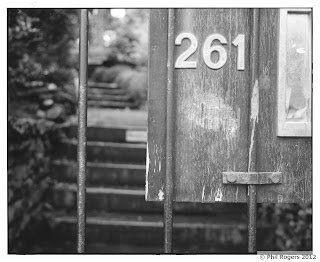You will probably have, somewhere in your house, or in your Mum and Dad's house, a big plastic bag full of old family photographs. Maybe they're extremely organised and are in albums, or (as is most usually the case) there's just a ton shoved away in several boxes. Whatever way, they'll be there somewhere.
This whole practice of photo-squirelling ended for most people in the world about 7 or 8 years ago, when the advent of the (relatively) cheap digital compact camera meant that you weren't stuck with the 36 photographs of all sorts of things that you'd always wasted a roll of film on.
Nowadays, perfection has been reached - you can take a crappy photograph and look at the screen, say to yourself, 'Oh, Aunty Jean does look like Frankenstein on this one', make your decision on the spur of the moment and bingo, press delete and it is gone forever.
Before this, you took your film to the chemists or the local lab and got them to process it, and (unless Aunty Jean got her hands on it) you were stuck with that photo of her looking exactly like Boris Karloff.
This was a good thing, because mostly you wouldn't get rid of these photos. You really didn't want to tear it in half and chuck it in the bin, because it seemed sacreligious - you had paid good money to have them processed and printed, why automatically tear them up?
Years later, when Aunty Jean had moved on to look like Lon Chaney Jr as the Wolfman:
you could go to your big bag of photos, hunt around for several hours, produce a photograph and say to her 'Remember when you used to look like Boris?'.
But not any more, it has gone. people want to look good in photographs and will delete at the tip of a hat. The thing is, where does this digital censorship stop? Pretty soon, all family photographs will be perfect and the ones that were the most revealing (and perhaps more importantly, truest to the family's real selves) are no longer there. A snapshot, literally, of family life is gone. It is sad isn't it? No more gurning grins; no more haircuts from hell; no more 'What on earth were you doing?'; no more laughter.
People these days just seem to be too darn serious.
So what am I trying to say from this? Well basically it is a plea to all you digital compact family camera people; rather than just take a photograph and automatically checking your screen and making a snap-decision on image execution, why not take a pile and don't edit them at all. I exhort you - this weekend, go out and make a load of images with a proper camera if you have one, or a digi-phone-thingy if that is the last resort.
Put all the ones you would have automatically deleted in a folder somewhere and forget about them. Set up a calendar reminder for say a year or so hence and restrain yourself from looking at them in that time. Then, when the time has passed you can look at them and maybe say to yourself 'I'm glad I didn't get rid of these'.
My wife and I were preparing a slide show for my mother-in-law's birthday, and we were going through bags of old photos looking for suitable ones that we could caption. Eventually we found them - there are plenty of others, but this is a favourite. These days I don't think it would have survived the digital culling.
It screams 1970's, and it isn't just the clothes, it's the wonderful vaguely inaccurate colour. And is that really a huge bag of Embassy and Capstans?
Oh, and I have also kept the caption we added for the slide show, simply because it makes us laugh every time we see it. Hopefully you'll feel that too . . . .
People try to reproduce this colour cast these days when they want to make things look 'retro'. Sometimes they are successful, but often it is too polished. The most successful are your valiant Lomographers, off a Sailin' the Seven Seas of Weirdness.
















